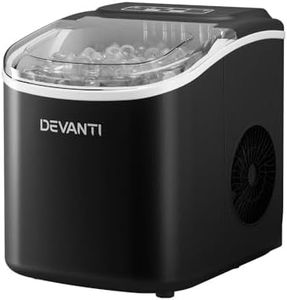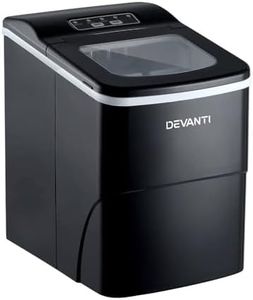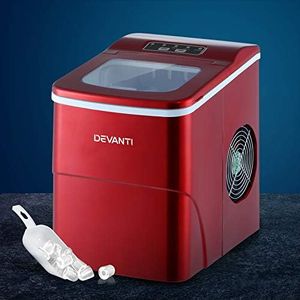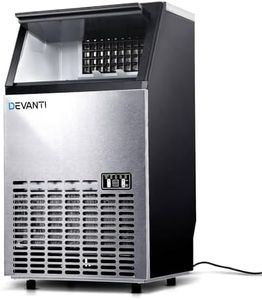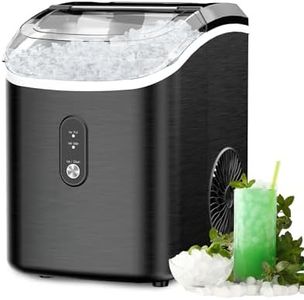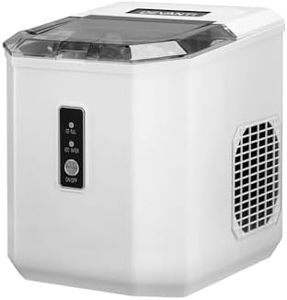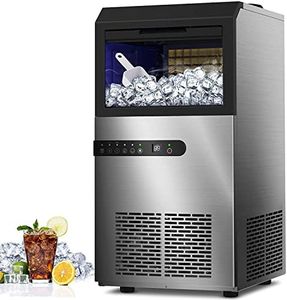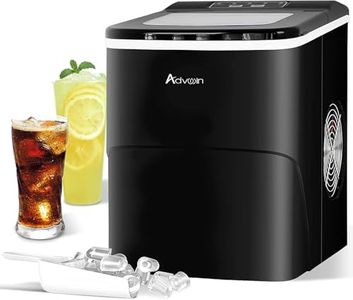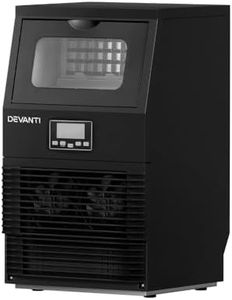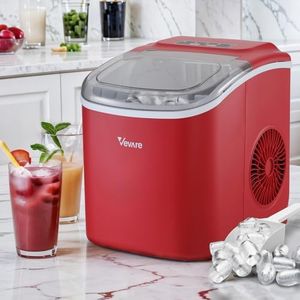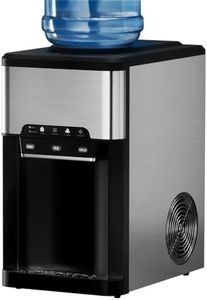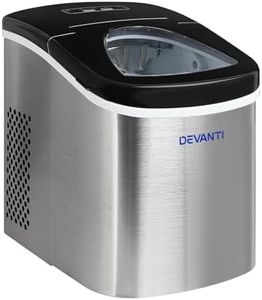We Use CookiesWe use cookies to enhance the security, performance,
functionality and for analytical and promotional activities. By continuing to browse this site you
are agreeing to our privacy policy
10 Best Ice Cube Makers
From leading brands and best sellers available on the web.Buying Guide for the Best Ice Cube Makers
Buying an ice-cube maker can make life a lot more convenient, especially if you love hosting gatherings or simply enjoy cold drinks on demand. The right ice maker for you depends on where you plan to use it, how much ice you need, and the kind of ice you prefer. Understanding the different specifications will help you choose a model that fits into your lifestyle and meets your needs without hassle.Ice Production CapacityThis spec tells you how much ice the machine can make in a 24-hour period. It's important because it determines whether the ice maker can keep up with your demands, whether that's for personal use or for entertaining guests. Small capacity models (around 20-30 pounds per day) are good for personal or family use, while higher capacities (40 pounds and up) are better suited for large gatherings or offices. Think about how much ice you use on a typical day to help decide what production rate works for you.
Ice Storage CapacityIce storage capacity refers to how much ice the unit can actually hold at one time before it's full and stops making more. This is crucial if you need a large supply at once, like for parties. Compact models may store 1-2 pounds, which suits occasional use, while larger models can store 3 pounds or more for continuous access. Choose a model that won't leave you running out when you most need it.
Type of Ice ProducedDifferent machines make different types of ice—bullet, nugget, cube, or gourmet. The type affects the ice's hardness and how quickly it melts, as well as its suitability for various drinks. For example, bullet ice is great for everyday beverages, while soft nugget ice is popular for chewing and cooling drinks quickly. If you have a preference, look for a machine that makes your favorite type; otherwise, consider what drinks you make most often.
Size and PortabilityThe physical size and weight of the machine matter, especially if you have limited counter space or want a model you can move easily. Small countertop models fit well in kitchens or on camping trips, while larger, stationary units work better in bars or large kitchens. Measure your space and think about where you'll use the machine before deciding.
Speed of Ice MakingThis describes how quickly the machine can produce a batch of ice, usually measured in minutes per cycle. This is important if you often need ice on short notice. Faster machines can make a fresh batch in about 6-10 minutes, while slower ones may take 15 minutes or more. If you have frequent or sudden needs for ice, prioritize a faster machine.
Ease of Use and CleaningFeatures like simple controls, transparent lids, and automatic cleaning cycles can make using and maintaining your ice maker hassle-free. If you prefer minimal effort and want to keep things sanitary, look for these helpful features. Think about how much time you're willing to spend on upkeep when choosing.
Water SourceSome ice makers use a built-in water reservoir that you fill manually, while others can be connected directly to a water line for continuous operation. Manual-fill models work anywhere but require you to keep adding water, whereas water-line models are more convenient for heavy use but need installation. Your choice depends on whether portability or continuous convenience is more important for you.
